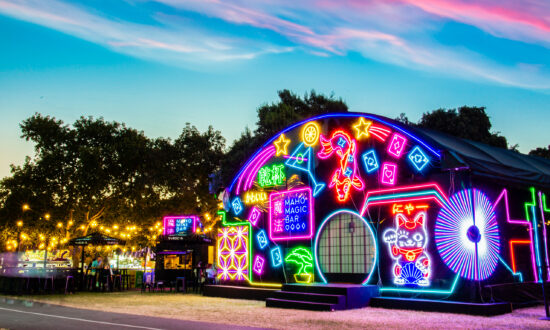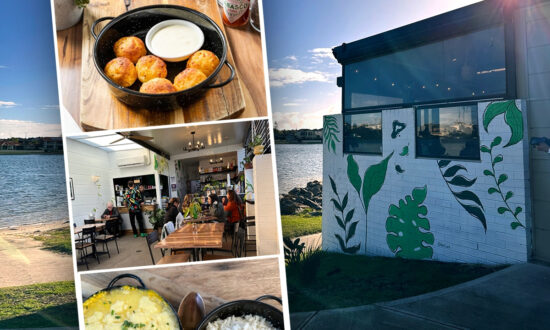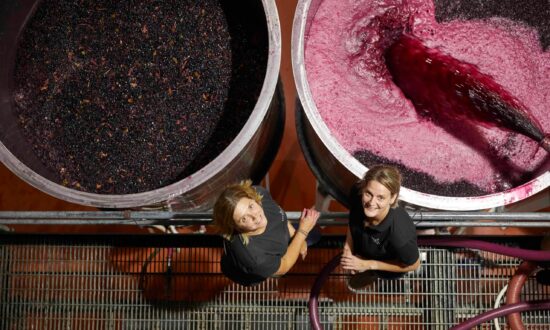You may have noticed that this week we celebrated another of those infernal international days of a certain grape variety. They’re a dime a dozen these days, though this week’s hero, Grenache, was one of the originals – and there’s a fair bit to celebrate about it, especially in South Australia.
We have more here in the ground than anywhere else in the country. And with that comes an enviable history and greater understanding of what the variety can do in terms of where it grows at its finest, and what winemakers are now doing to elevate its range of styles and ultimately its grandeur as one of the State’s and the nation’s truly great red wine varieties.
It wasn’t too long ago that Grenache was mostly used in the fortified industry, before evolving out of necessity into table wines that at first reflected a typical varietal character in lighter to medium-bodied, mostly sweet-fruited and jubey reds that “real” red drinkers loved to denigrate as flimsy and unsubstantial.
In the past decade or so, Grenache shook off that poor-man’s reputation as winemakers and savvy wine consumers realised the variety has a lot more to offer.
The rise in stature of another red variety, Pinot Noir, leading consumer trends towards more medium-bodied reds, as well as the emergence of a wide range of Mediterranean varieties fitting into that slot as well, has allowed Grenache to stake its claim in similar territory, with the added and critically important advantage of already being an important part of our established vineyards in warmer climatic regions.
Now we see Grenache moving up in the world to take on a more respected status. It’s considered by many, depending on the vineyard site and winemaking involved, to show the same kind of “terroir” characteristics as elite Pinot Noir and Nebbiolo.
For Grenache, the two regions that have taken the grape to the next level are McLaren Vale and the Barossa. In the former, one particular district above others has become synonymous with the best of the best – Blewitt Springs, which we’ll look at in detail today. (In my next column I’ll focus on the Barossa.)
Winemakers, the restaurant and retail trade and smarter drinkers have cottoned onto Blewitt Springs Grenache as something out of the box because of quite specific geographic, geological, climatic and viticultural elements that coalesce in this unique strip in the eastern foothills sector of McLaren Vale.
Elevation and cooler coastal breezes moderate growing season temperatures. Sandy grounds, often with red clay and ironstone underneath, inculcate Grenache with extraordinary fragrance, flavour and intricate tannin profiles. And many vineyards have nurtured old, dry-grown bush vines for so long that they have found what you might call their “happy place” in this zone.
All of these critical factors have attracted many of the finest producers to the district. Yangarra has been pivotal in raising the profile of Blewitt Springs and the fine-wine reputation of Grenache, now proudly showcasing the variety as an elite player via several of its iterations. Their collection is crowned by a top-shelf High Sands Grenache that retails for around $250 per bottle.
There’s something about the clarity of flavour from Grenache on sand – it’s really bright and pure.
The wines included in the Tasting Notes below are great examples of the district’s finest Grenache, many now commanding similar prices to similarly elite wines from more recognised SA varieties.
S.C. Pannell has been working this territory via an established grower for close to a decade, recently buying their own estate block. Chalk Hill has brought glory to the place with its Alpha Crucis label that was awarded best Grenache (and blends) in the recently published 2023 Halliday Australian Wine Companion.
Other producers of note tapping into Blewitt Springs vineyards include Thistledown, Aphelion, Ministry of Clouds, Bondar, Willunga 100 and Paralian, just to name a few. Even distant winemakers like Vanguardist’s Michael Corbett, based in the Barossa, recognise the area as one of rare opportunity.
Notably, if ever there was proof of the regard in which Blewitt Springs is regarded, the much-admired Adelaide Hills-based crew at Shaw + Smith have purchased a vineyard in the dress circle of the district, naming it MMAD Vineyard after its proprietors Michael Hill Smith MW, Martin Shaw, Adam Wadewitz and David LeMire MW. They have just released three wines from their first year in the area, including a most impressive Grenache, a very smart Chenin Blanc and a stylish Shiraz.
Blewitt Springs Grenache, especially, has an intrinsic value and quality to it, LeMire says.
“People are more and more understanding the district has something special about it, and there’s still a lot more to go on that front,” he says. He points to the freshness, the perfume and fragrance, and a distinctive palate structure in many of the district’s wines, and now the MMAD Grenache as well, that “reflect the unique terroir of Blewitt Springs and the old vines that thrive there”.
It’s this kind of terroir detail that has propelled the area’s Grenache into cellars of highly regarded collectors as well as onto restaurant lists where there is some serious thought given to wines of such calibre from all over the world, LeMire notes.
“We’ve seen the capacity of Grenache to make wines of great beauty and age-ability,” he says.
“We’ve seen that in France, and here it’s a relatively new frontier – and it’s very exciting.”
Put simply, a whole lot of factors seem to come together in this one area, says Tom Harvey of Chalk Hill Wines.
“I see it as the nirvana when it comes to a Grenache-growing location,” he says.
For the most committed producers, even while there might be a general district expression of terroir in Grenache, an even tighter focus on specific vineyard sites is now occurring. That is the Holy Grail for the most prized wines, here and all around the world.
Even though this is the first release of MMAD Grenache, its winemakers point to specific soil and geological factors at their vineyard – sand over a layer of ironstone pebbles – that give both perfume and structure to the wine. Flavours they note as raspberry coulis and pomegranate alongside fennel seed and cumin may also become site-specific signatures in the future.
These nuances are not out of the ordinary. Skye Salter is winemaker at Willunga 100 which sources Grenache from two vineyards in Blewitt Springs and another in the nearby Clarendon district, as well as co-proprietor/winemaker with partner Charlie Seppelt in their own Paralian brand out of another vineyard. She notes a range of different Grenache characters coming from each.
“There’s a pretty obvious difference that I see between Blewitt Springs and Clarendon blocks,” Salter says. “I always see the Blewitt Springs as having really good fruit density and quite lifted aromatics, generally red fruits like raspberry, and always a little more flamboyant than Clarendon.
“Clarendon always has some pretty floral notes and an underlying earthy tone, almost a little broody and doesn’t give up all its secrets as easily as Blewitt Springs.
“There’s something about the clarity of flavour from Grenache on sand – it’s really bright and pure.”
While quite a lot of characters are consistent throughout Blewitt Springs, she says, how exclusive they are from point to point remains inconclusive. However, from the Marmont Vineyard, where she and Seppelt source their Paralian Grenache, one thing is definite.
“We get a delicious pomegranate character from that site – it’s always that and a Campari note and lovely tannins.”
That very specific vineyard footprint – which is able to elevate wine to its highest regard – is not lost on Yangarra winemaker Peter Fraser. The two finest examples of Grenache he steers out of the estate’s vineyards at the eastern stretches of the Blewitt Springs district – the High Sands and the Ovitelli – come from close neighbouring blocks, the former on the deepest of the sands producing only half the yield of the latter, which results in a wine, he notes, of greater power and complexity though still with plenty of fragrance.
The Ovitelli is the estate’s most perfumed and fresher, elegant style. The winemaking is different for each, the Ovitelli spending its fermentation and maturation in large ceramic egg-shaped vessels, while the High Sands includes large, older oak maturation that brings a bigger frame and more muscle to the finished wine.
Being able to showcase such diversity of site and style has convinced Fraser that the region has earned the kind of domestic and global respect other great Grenache regions have gained, like Chateauneuf-du-Pape in France and Priorat in Spain.
“But we don’t need to compare ourselves anymore,” Fraser says. “We are now ourselves – we can take our place among the great wines of the world.”
Part 2 of this series, looking at Barossa Grenache, will be published here on October 1.
TASTING NOTES

MMAD Grenache 2021
Blewitt Springs – McLaren Vale / 14% / $75
The first thing to note is the front label, which specifies only Blewitt Springs as its source. A statement right there. And as a first release it’s truly great now and incredibly promising for what will come from a wine that already reveals many of the variety’s desired tensions and harmonies: fragrance that’s lively and pure, then a set of flavours from red berry to a slightly earthier fruit vibe that the winemakers note as pomegranate. A sense of Middle Eastern spice adds extra interest and assists in the fine, dusted tannin feel, without distracting from the wine’s underlying freshness and energy. Exciting times.
S.C. Pannell Old McDonald Grenache 2020
McLaren Vale – Blewitt Springs / 14% / $70
From 78-year-old, dry-grown, bush vines, with 23% whole bunches included, gently steered in the winery into larger and older oak vats for maturation, remaining unfiltered. All this is to say that crafting this wine is about allowing it to express its own identity from that source with as little interference as possible. In the glass, this translates to a wafting fragrance first, red licorice notes, faint fennels, followed by the drinking-in of neatly ascendant, ripened crimson fruits, all supported with lip-smacking palate energy and mouthcoating fine-grained tannins, lingering as if for eons. Bloody fantastic.
Paralian Grenache 2021
McLaren Vale – Blewitt Springs / 14% / $42
Paralian is crafted by Skye Salter and partner Charlie Seppelt, sourced from the Marmont Vineyard deep within the district. Aromas arise in a familiar Blewitt Springs set of fragrances: crushed crimson berries, native bush florals, dusty dark spices, and as the winemakers suggest themselves, a pomegranate-like note – for me, the pith as well as the seed-flesh. There’s pepper too, pink and white corns in the mix. The palate is tense and yet to show all its complexities, tightened by a carpet of fine tannins that promise an impressive longevity. Very smart wine and a very good investment.
Chalk Hill Alpha Crucis Blewitt Springs Grenache 2021
McLaren Vale – Blewitt Springs / 14% / $60
The previous 2020 vintage of this wine was crowned Best Grenache (and Blends) in the current 2021 Halliday Companion, so there’s plenty of excitement for the follow-up, sourced from the same 90-year-old vines on Schuller Road near the eastern extremities of the district. The fragrance is in line with sub-regional expectations, perhaps a little more zip in its aromatic berry zing, and the palate follows the same set of clues, reverbing that red fruit tang, energised and lip-smacking with vibrant acidity. A more electric style that should evolve over many years.
Yangarra Ovitelli Grenache 20020
McLaren Vale – Blewitt Springs / 14.5% / $75
One of several Yangarra Grenache iterations, this one unique in its ceramic, egg-shaped vessel winemaking as well as individual block sourcing. Fragrance parameters sit in a familiar frame – bush florals meet crushed berry, meets kitchen herbs, especially dried thyme. Keep swirling the glass and you’ll disappear into its vapours, as you will when you sip, all those aromatics echoing as flavour whirlpools in the mouth, coated with a pretty decent cloud of fine tannins that are pliable enough to still allow the wine’s inherent juiciness and spice-like seasoning to remain front and centre. There’s a lot to calculate here besides the pure expression of the variety at its most enjoyable. Let it sit in the glass. Let it dwell. It’s gorgeous.

Get InReview in your inbox – free each Saturday. Local arts and culture – covered.
Thanks for signing up to the InReview newsletter.
La Petite Vanguard Grenache 2021
McLaren Vale – Blewitt Springs / 12.7% / $30
While based in the Barossa, winemaker Michael Corbett still has a knack of tapping into precious regional/varietal stories around the state including this superb Blewitt Springs Grenache. There’s a pretty modern approach here, early harvesting as well as later picks, then 60% whole bunch inclusion for some complexity and thoughtful skin maceration as well. The wine is in a more youthful exuberant style, medium-bodied and lively, but certainly not simple, holding within it a hidden power with earthy, saline, crushed rock meets crushed berry feels couched in lightly chewable, spicy tannins that makes you want for more. Definitely a style statement worth its place in the squad.
Willunga 100 Trott Vineyard Grenache 2021
McLaren Vale – Blewitt Springs / 14.5% / $55
This comes from a treasured vineyard at the western side of the Blewitt Springs district – 60-year-old vines at 210m above sea level. Aromas here are more berry focused at first than others in this set, though the matrix becomes increasingly complex and engaging as the wine dwells in the glass. In other words, decant for an hour or so and you’ll be most rewarded. Spice, exotic and fragrant, anise most definitely, are all part of the initial meeting, and then a delightfully juicy palate follows, balanced then with almost tangy, sticky tannins rather than dusty and coating. Very drink-easy in style yet still with intrigue in the flavour notes and tension in the structure and finish. Exceptionally moreish. A wine that lures you back for second and third pours as more elements unfold over time.
Support local arts journalism
Your support will help us continue the important work of InReview in publishing free professional journalism that celebrates, interrogates and amplifies arts and culture in South Australia.
Donate Here




